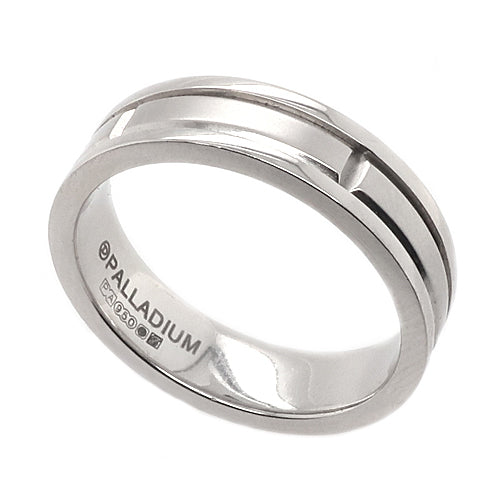White Precious Metals: An Update

Although yellow gold is making a comeback and rose gold is increasingly carving out a place for itself in the market, most of the bridal jewellery that we sell is still crafted in white gold or platinum. However, changes in the prices of precious metals over the last few months have meant that the advice we offer when customers are choosing a metal has altered. For white metals, where once there was a great deal of choice with a range of price-points, the landscape has altered considerably.
There are three precious metals with a white or silver colour that are often used for engagement or wedding rings; white gold, platinum and palladium. This excludes silver, which is generally regarded as too soft to be practical for long-term regular wear. Please see our information page on white metals for more information on the differences between the precious metals and how they wear.
Until recently, by offering 9ct and 18ct white gold, platinum and palladium, we were able to bring customers a good spread of prices. Each of the metals has its ‘pros and cons’ but by talking you through these we can help you make an informed decision. Movements in the metal prices now mean that 18ct white gold, platinum and palladium are now much closer in price, limiting the range of price points on offer.



Palladium has seen the biggest change: it has many uses outside of jewellery, particularly in catalytic converters, and the demand for these has increased hugely. Over the last two years its value has more than tripled, making it the most expensive of all the precious metals when compared gram-for-gram. Indeed, the price for fine palladium now far outstrips the price for fine gold. Palladium was originally introduced to the market over a decade ago as an affordable alternative to platinum, but it is now more expensive than its highly prized counterpart!
For this reason, we have recently begun to offer a different standard of palladium which previously we had not seen a need for. Palladium is generally alloyed as 95% pure with just a small amount of other metals to increase its malleability. A 50% palladium alloy (palladium 500) brings a more affordable alternative to the table. It is slightly darker than the 950 alloy but otherwise broadly similar. The idea is akin to having the choice of 9ct and 18ct gold; it is just the proportion of the precious metal in the alloy that is different.
The price of platinum did fall for a while, although it has since recovered somewhat. However, since the price of gold is pretty much at an all-time high and palladium has increased so much, it is no longer the expensive luxury it once was. Platinum is an especially dense material, making a ring in platinum feel much heavier than the same design in another precious metal, and as pieces are generally priced ‘per gram’ this closes the gap to an extent, but we are often finding now that the prices of rings in 18ct white gold or platinum are similar.


There are several factors that can impact upon the exact price of a precious metal item. Since all are alloyed to make them more practical to work with and wear, a significant factor can be what they are alloyed with. While in many cases platinum still costs a little bit more than 18ct white gold, with our plain wedding bands, the 18ct white gold is now more expensive. This is down to its high palladium content; a choice which improves its appearance but does now also increase its cost quite significantly.
As an example, I have done a spot-check on the prices for one of our popular wedding ring styles (27/2/2020):
|
9ct white gold |
£305 |
|
Palladium 500 |
£660 |
|
Platinum 950 |
£730 |
|
18ct white gold |
£905 |
|
Palladium 950 |
£1030 |
From the table you can see that 9ct white gold continues to offer an affordable price for those on a tight budget. Palladium 500 does offer something of a bridge, but it is much closer to the price of the platinum ring than the 9ct white gold. Both 18ct white gold and palladium are more expensive than the platinum. All white metals have their aesthetic issues after a period of wear (see our information page about white metals for more detail) and we do suggest choosing the same metal when purchasing a ring to sit next to an existing one, but since platinum is the most practical, our recommendation otherwise would be that if your budget allows then it is definitely the option to go for.



Additionally, we are now offering a half price special offer across our existing stock of palladium rings. Primarily wedding bands, with some gents’ dress or signet rings, these rings offer a fantastic opportunity to secure a palladium piece at an advantageous price. As this offer is only available on our current stock, the ring does need to fit you or be sizeable to fit, so choices of style and size are restricted. Please visit our showroom to see the full selection, or if you are looking for a plain wedding band then get in touch to check if we have a particular width/profile in stock.
If you have any questions about your choice of metals, please get in touch. Our team of experienced and knowledgeable jewellers will be able to help you.


Comments on this post (0)